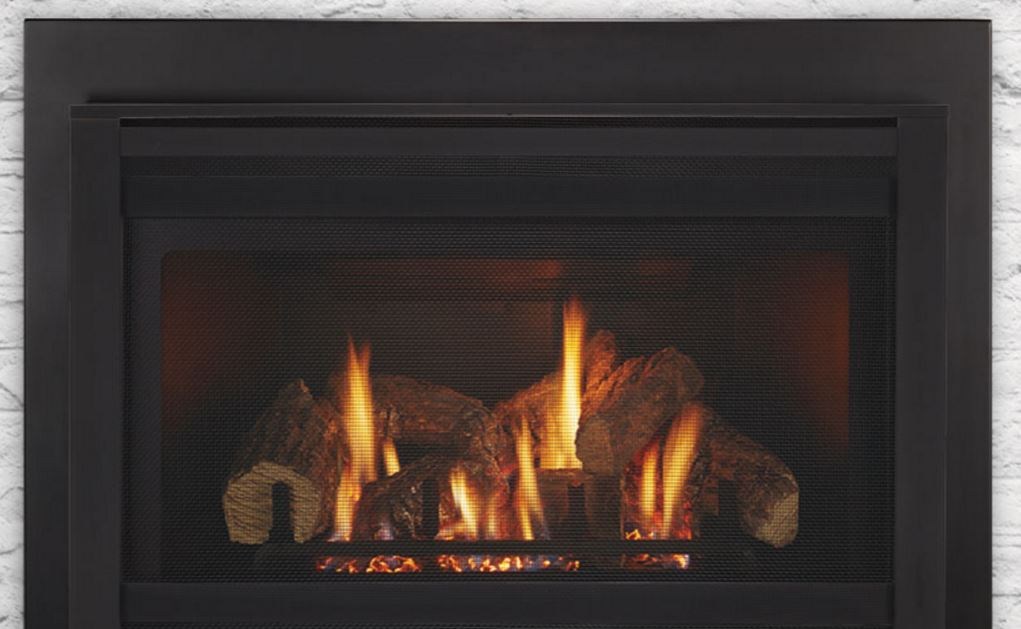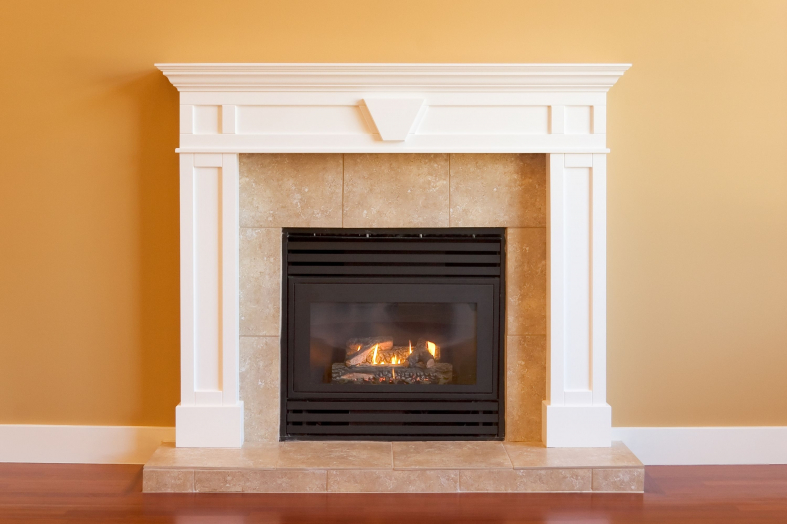Gas Fireplace Heat Output
Gas fireplaces are a popular choice for homeowners seeking a convenient and efficient heat source. Unlike traditional wood-burning fireplaces, gas models offer the advantage of instant heat with the push of a button and often feature adjustable flame settings to control the heat output. The heat produced by a gas fireplace is measured in British Thermal Units (BTUs), which indicates the amount of heat energy required to raise the temperature of one pound of water by one degree Fahrenheit. The BTU rating of a gas fireplace can range from 5,000 to 50,000 or more, depending on the model and design, making it essential to choose a fireplace with the appropriate heat output for the size and needs of your space.

Factors Affecting Heat Output
Several factors influence the heat output of a gas fireplace, including the type of gas used (natural gas or propane), the fireplace’s efficiency rating, and the design of the fireplace itself. Natural gas fireplaces typically offer a consistent and reliable heat source, while propane fireplaces may produce a slightly higher BTU output due to propane’s higher energy content. The efficiency of the fireplace, often expressed as a percentage, indicates how much of the fuel’s energy is converted into usable heat. High-efficiency models, such as those with direct vent systems, can deliver up to 80-90% of their BTUs as heat into the room, while lower-efficiency models may lose more heat through the chimney or vent. The fireplace’s design, including the firebox’s size and the presence of features like blowers or fans, also plays a role in how effectively the heat is distributed throughout the space.

Choosing the Right Heat Output for Your Space
When selecting a gas fireplace, it’s important to consider the size of the room and the level of warmth you desire. A fireplace with a lower BTU rating (around 10,000 to 20,000 BTUs) is suitable for smaller spaces, such as bedrooms or small living rooms, where the goal is to provide supplemental heat without overwhelming the space. For larger rooms or open-concept living areas, a fireplace with a higher BTU rating (30,000 to 50,000 BTUs or more) may be necessary to ensure adequate warmth throughout the space. It’s also important to factor in the insulation of the home, the climate, and the desired use of the fireplace—whether it’s intended as the primary heat source or as an additional comfort feature. Consulting with a professional can help determine the appropriate BTU output for your specific needs.

Maximizing Heat Output and Efficiency
To get the most out of your gas fireplace’s heat output, consider incorporating features and practices that enhance its efficiency. Installing a blower or fan can help circulate warm air throughout the room more effectively, ensuring that the heat is evenly distributed. Additionally, choosing a model with a high-efficiency rating, such as a direct vent or ventless gas fireplace, can maximize the amount of heat retained within the room. Regular maintenance, including cleaning the glass, inspecting the venting system, and ensuring that the gas lines are in good condition, is also essential to maintaining optimal performance. By selecting the right fireplace for your space and maintaining it properly, you can enjoy a warm, cozy environment while minimizing energy consumption and costs.

Heat & Glo Supreme Series Gas Fireplace Insert – Newtown Fireplace Shop

12 Best Fireplace Gas Logs That’ll Surely Warm Your Home This Winter

How to Get More Heat From a Gas Fireplace? – Beezzly

What kW Heat Output Does My Gas Fire Need? Trafford Fireplaces Carlisle, Cumbria

How To Get More Heat From Gas Fireplace [7 Pro Tips] – FireplaceHubs

What is the Maximum heat output of a Gas fire and electric fireplace? – bespokemarblefireplaces

Zero Rated Clearance Outdoor Gas Fireplace from Cheminees Chazelles

The Radiant retro gas fire on Sale. Can be wall mounted on within a traditional fireplace. Max

Guide to the Best Firewood for Heating, Cooking, Smoking and More. Some of these are very hard

Heat Efficiency – A Comparison of Four Systems ClimateCare

Related Posts:
- Gas Fireplace Timer
- Ventless Gas Fireplace Stoves
- Gas Fireplace Parts Diagram
- Gas Fireplace Key Valve
- Gas Fireplace Crackle Box
- Gas Fireplace No Pilot Light
- Gas Fireplace Grate
- Ventless Gas Fireplace Carbon Monoxide
- Gas Fireplace on Interior Wall
- Gas Fireplace Building Code
Gas fireplaces are a popular choice for homeowners looking to add warmth and ambiance to their living spaces. With their convenience, cleanliness, and efficiency, gas fireplaces have become a staple in many homes. One important factor to consider when choosing a gas fireplace is its heat output. Understanding how much heat a gas fireplace can produce is crucial in determining if it will be able to adequately warm your room or home.
Factors Affecting Gas Fireplace Heat Output
Several factors can affect the heat output of a gas fireplace. The size and BTU rating of the fireplace unit itself play a significant role in determining how much heat it can produce. Larger units with higher BTU ratings will generally generate more heat than smaller units with lower BTU ratings. Additionally, the efficiency of the fireplace, the quality of the installation, and the insulation of the room all impact the overall heat output.
Another factor to consider is the type of fuel being used in the gas fireplace. Natural gas and propane are common fuel options for gas fireplaces, with natural gas typically providing slightly higher heat output compared to propane. It’s important to consult with a professional to determine which type of fuel will work best for your specific needs.
Room Size and Heating Capacity
The size of the room or area you intend to heat is also an important consideration when evaluating gas fireplace heat output. Different gas fireplaces have varying heating capacities, which are measured in square footage or BTUs per hour. It’s essential to select a gas fireplace with a heating capacity that matches the size of the room you want to heat.
When determining the heating capacity needed for your space, consider factors such as ceiling height, insulation levels, and any drafts or air leaks in the room. Properly sizing your gas fireplace based on these factors will ensure that it can effectively warm your space without overworking or underperforming.
Installation and Maintenance
Proper installation and maintenance of your gas fireplace are crucial for maximizing its heat output and ensuring safe operation. It’s essential to have your gas fireplace professionally installed by a certified technician to ensure that it meets all safety standards and regulations. Regular maintenance, including cleaning, inspecting, and servicing your gas fireplace, will help keep it running efficiently and effectively.
In addition to professional installation and maintenance, there are some simple steps you can take to optimize the heat output of your gas fireplace. Keep the area around the fireplace clear of obstructions to allow for proper airflow and ventilation. Use a fan or blower kit if available to help distribute heat more evenly throughout the room. And always follow the manufacturer’s guidelines for safe operation and maintenance.
Common Mistakes to Avoid:
– Neglecting proper sizing: Choosing a gas fireplace that is too small for your space can result in inadequate heating, while selecting one that is too large can lead to wasted energy.
– Ignoring maintenance: Failing to regularly clean and service your gas fireplace can reduce its efficiency and potentially pose safety hazards.
– Blocking airflow: Placing furniture or decor too close to the fireplace can impede airflow and reduce its ability to effectively distribute heat.
– Using improper fuel: Using the wrong type of fuel or failing to maintain proper fuel levels can impact the performance of your gas fireplace.
1. How do I determine the right size gas fireplace for my room?
To determine the right size gas fireplace for your room, consider factors such as room size, ceiling height, insulation levels, and any drafts or air leaks. Consult with a professional technician who can help you calculate the heating capacity needed based on these factors.
2. Can I install a gas fireplace myself?
It is highly recommended to have your gas fireplace professionally installed by a certified technician. Improper installation can lead to safety hazards and decreased efficiency.
3. How often should I clean and service my gas fireplace?
It is recommended to clean and service your gas fireplace at least once a year. Regular maintenance will help ensure optimal performance and safety.
4. Can I use my gas fireplace as a primary source of heating?
While some high-efficiency gas fireplaces can serve as a primary source of heating for certain spaces, they are typically used as supplemental heating sources in conjunction with central heating systems.
5. Are there different types of venting options for gas fireplaces?
Yes, there are various venting options available for gas fireplaces, including direct vent, vent-free, natural draft venting systems. The best option for you will depend on factors such as installation location and local building codes.
Understanding the heat output of a gas fireplace is essential for ensuring that it can effectively warm your space. Factors such as the size and BTU rating of the unit, fuel type, room size, and installation quality all play a role in determining the heat output of a gas fireplace. By consulting with a professional, properly sizing your gas fireplace, and following maintenance guidelines, you can optimize its performance and enjoy a cozy and warm living space. Avoid common mistakes such as neglecting proper sizing, ignoring maintenance, blocking airflow, and using improper fuel to ensure safe and efficient operation of your gas fireplace. Overall, gas fireplaces are a great addition to any home, providing warmth and ambiance with their convenience and efficiency. By understanding the factors that affect heat output, properly sizing your fireplace for your space, and ensuring proper installation and maintenance, you can maximize the performance of your gas fireplace. Consulting with a professional, following manufacturer’s guidelines, and avoiding common mistakes will help you enjoy a cozy and comfortable living space with your gas fireplace. Remember to always prioritize safety when using a gas fireplace. Follow all manufacturer’s guidelines for operation and maintenance, and have your fireplace inspected regularly by a certified technician. By taking these precautions and following best practices, you can enjoy the warmth and comfort of your gas fireplace for years to come.